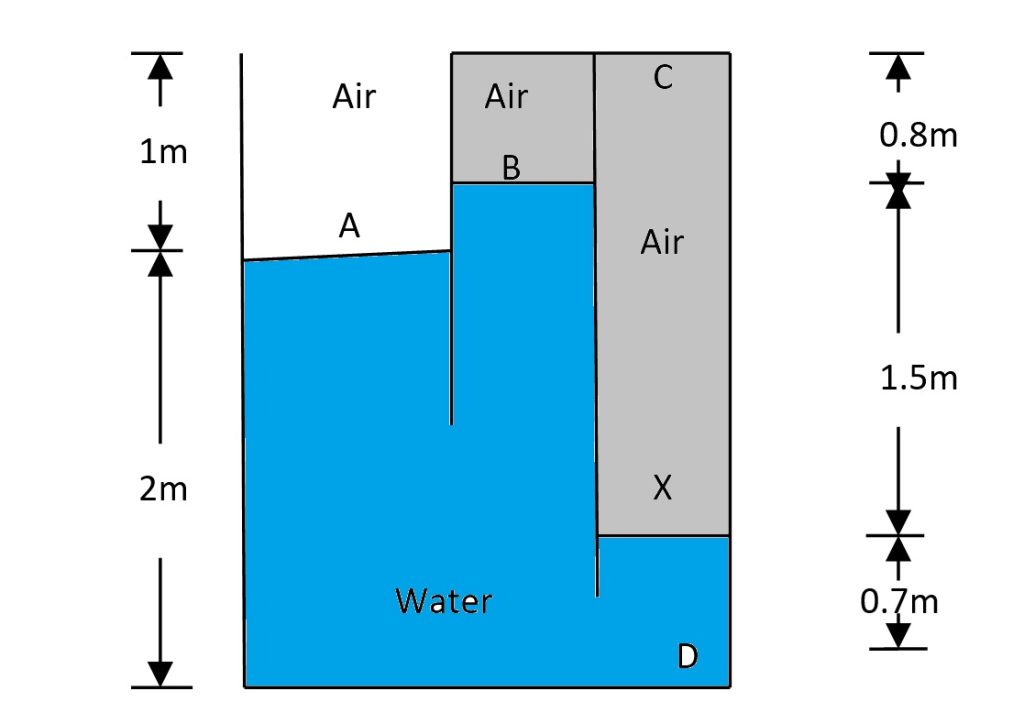Problem Statement
A reservoir of glycerin has a mass of 1100kg and a volume of 0.9 m³. Calculate:
- Weight
- Mass density
- Specific weight
- Specific gravity
Given Data
- Mass of glycerin (m) = 1100 kg
- Volume (V) = 0.9 m³
- Acceleration due to gravity (g) = 9.81 m/s²
- Specific weight of water (γwater) = 9810 N/m³
Step-by-Step Solution
1. Weight (W)
W = mass × gravity
W = 1100 kg × 9.81 m/s²
W = 10,791 N
Think of weight as the force of gravity pulling on the glycerin. It’s like measuring how heavy the glycerin feels on Earth.
2. Mass Density (ρ)
ρ = mass/volume
ρ = 1100 kg/0.9 m³
ρ = 1222.22 kg/m³
Think of density as how packed together the molecules are. Like comparing a brick to a pillow of the same size – the brick has higher density!
3. Specific Weight (γ)
γ = density × gravity
γ = 1222.22 kg/m³ × 9.81 m/s²
γ = 11,990 N/m³
Specific weight tells us the weight of one cubic meter of the fluid.
4. Specific Gravity (S)
S = specific weight of glycerin/specific weight of water
S = 11,990 N/m³/9810 N/m³
S = 1.22
This means glycerin is 1.22 times heavier than water!
Simple Explanations & Real-World Examples
Weight (10,791 N)
Imagine lifting a car engine – that’s about how heavy this glycerin is!
Real Example: A small car engine weighs about 11,000 N
Mass Density (1222.22 kg/m³)
If you filled a 1-liter bottle with glycerin, it would weigh 1.22 kg, while water would weigh 1 kg.
Common Densities:
- Water: 1000 kg/m³
- Milk: 1030 kg/m³
- Glycerin: 1222 kg/m³
Specific Weight (11,990 N/m³)
This tells us how much pressure the glycerin creates at the bottom of a container.
Practical Use: Engineers use this to design storage tanks and pipes
Specific Gravity (1.22)
Drop glycerin in water – it sinks! Why? Because its specific gravity is greater than 1.
Everyday Examples:
- Oil (floats): 0.92
- Water: 1.00
- Honey: 1.36
Quick Memory Tips:
- Weight = How heavy it feels
- Density = How packed together it is
- Specific Weight = Pressure it creates
- Specific Gravity = Comparison to water



